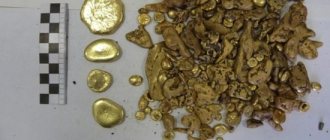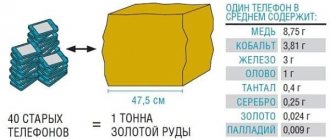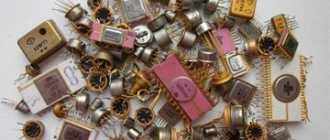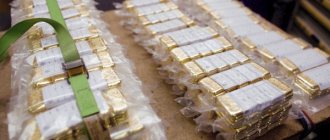The metallurgical process of purifying precious metals from contaminants is called refining. This process is used to obtain pure precious metals of a wide variety of samples for the jewelry industry, the production of bank bullion, and government reserves. Refineries are enterprises with the necessary equipment and technologies, specializing in the processing of industrial semi-finished products, concentrates and alloys in order to extract high-purity precious metals.
Refineries in Russia
Refining is the process of obtaining chemically pure gold of various samples for banking needs, bullion production, and the jewelry industry.
Refineries process semi-finished products in the form of spot gold, gold-containing concentrates and alloys produced at processing plants, mining and processing plants and mining and metallurgical plants. In Russia, the geography of gold supplies to refineries is subjective and changes quite often. When choosing a refinery, the decisive role is played not so much by its location as by the cost of refining, which is not stable and the same for similar industries.
In Russia, the following have the right to refining precious metals - it was built in 1974 in the city of Kasimov, Ryazan region. Initially the plant produced iron. However, in 1991, by government decision, the plant was repurposed for gold processing. The plant produced gold of the highest standard (99.99) to replenish Russia's gold reserves. The creation of a refining giant in the Ryazan region was “justified” only by its proximity to the main consumer of gold - Gokhran. In modern conditions, it has become unprofitable to use this enterprise for refining gold in the North-East, Primorye and Eastern Siberia. In the context of the abandonment of the state monopoly on the purchase of gold, the establishment of free prices for precious metals, taking into account the transport costs of transporting semi-finished gold products from suppliers, the Prioksky Non-Ferrous Metals Plant lost its status as a monopolist in the production of gold for the Russian gold reserve.
2) “ Novosibirsk Refinery ” - the famous and oldest in Russia - until the beginning of the 90s, it processed about 60% of the mined gold and handed it over to Gokhran. The technology of dissolution in aqua regia and high production standards made it possible to produce gold of excellent quality. After the creation of the Prioksky giant, the Novosibirsk Refinery managed not only to maintain its production and continue to function, but also to become the main competitor of the Prioksky Non-Ferrous Metals Plant.
3) “ Krasnoyarsk Non-Ferrous Metals Plant ” (OJSC “Krastsvetmet”) was built in 1939-1943 for the production of refined platinum metals from sulfide copper-nickel ores of the Norilsk deposit. Currently, the plant is listed as the only Russian producer of all types of precious metals (platinum group metals, gold, silver). In the structure of raw material supplies, 70% are concentrates from the Norilsk plant. OJSC "Krastsvetmet" is included in the lists of producers of precious metals according to the "Good Delivery" standard on the London, Tokyo and New York exchanges.
4) “ Shchelkovsky Plant of Secondary Precious Metals ” - located in the Moscow region and specializes in processing secondary precious metals. It accepts for processing metals containing more than 2% gold and more than 5% silver, i.e. relatively rich raw materials, the quantity of which is limited.
5) “ Kolyma Refinery ” was put into operation in 1998 in the Magadan region. The Kolyma plant owes its location to the decision of the regional authorities to create its own refining production, focused on local raw materials.
6) “ Ekaterinburg Non-Ferrous Metals Processing Plant ” (EzOTsM) is the oldest enterprise in Russia. It was created in 1916 for the refining of platinum group metals. In addition, today the plant refines spot gold, processes alloys, and also extracts precious metals from secondary raw materials. Unlike other refineries in Russia, EzOTsM produces both a wide range of technical products from pure precious metals, as well as their alloys, and jewelry from the main precious metals: gold, silver, platinum and palladium. The plant has a “Good Delivery” certificate for gold, silver, platinum and palladium.
7) JSC “ Uralelektromed ” is located in the city of Verkhnyaya Pyshma, Sverdlovsk region. Previously, the plant was one of the main suppliers of gold to the state, accumulating precious metals in a silver-gold alloy. The raw material basis for gold production at Uralelectromed JSC is copper concentrates - the so-called “copper gold”. The share of secondary raw materials based on copper or its alloys is also significant.
 " Kyshtym Copper Electrolyte Plant " is located in the city of Kyshtym, Chelyabinsk region. Extracts precious metals from low-grade scrap containing gold and silver without platinum group metals.
" Kyshtym Copper Electrolyte Plant " is located in the city of Kyshtym, Chelyabinsk region. Extracts precious metals from low-grade scrap containing gold and silver without platinum group metals.
Refineries in Russia
Source
Bullions for the Central Bank
In the workshop - not a step aside: the refining process involves acids, alkalis, lead, furnaces, open fire, the melting point is 1350 degrees - spectacular, beautiful, dangerous.
“Gold is a magical metal, it fascinates,” warns us the director of Russia’s largest Prioksky Non-Ferrous Metals Plant (PZTSM JSC) Vladimir Sonkin. Indeed, it is fascinating when smelters pour ladles of liquid gold mass into measuring cups. The picture is not for the faint of heart: manual “pouring” of future bank bullion. After a few hours, the mass will thicken, cool and turn into a completely tangible gold and foreign currency reserve of the country. Bullions of the highest Gost standard 999.9, weighing from 11 to 13 kg, will tomorrow replenish the vaults of the Central Bank of the Russian Federation, Gokhran, commercial banks, and will be traded on world precious metals platforms. Read also: Red and blue LOOKCOLOR
Located in the ancient Russian town of Kasimov, in the Ryazan region, the enterprise produces up to 66 tons of gold annually. Plus silver, platinum, palladium, osmium, iridium and other platinum group metals.
From waste collection to refining.
How is the market for secondary precious metals structured?
Let us dwell separately on the definitions:
List of refineries in Russia as of January 20, 2018: - JSC Prioksky Non-Ferrous Metals Plant; — JSC Novosibirsk Refinery; — JSC Krasnoyarsk Non-Ferrous Metals Plant named after V.N. Gulidova"; — JSC “Ekaterinburg Non-Ferrous Metals Processing Plant”; — CJSC Kyshtym Copper Electrolyte Plant; — JSC “Uralelectromed”; — Federal State Unitary Enterprise “Moscow Plant for Processing Special Alloys”; — PJSC Mining and Metallurgical; — JSC “Ural Innovative Technologies”.
Different types of VDM raw materials require different primary processing and/or preparation. Certain types can be immediately sent to refineries, while some types of raw materials require significant costs for primary preparation. For example, radio-electronic scrap must first be dismantled and separated from the housing and switching parts, which do not contain precious metals. This will allow both to isolate and process various materials that do not contain precious metals (ferrous and non-ferrous metals, polymers and composites, etc.) into marketable products, and to significantly increase the cost of precious metals. Plus, this will reduce the burden on the environment when processing VDM.
Next, fractions containing DM (boards, connectors, electrical power units, etc.) can be sent for smelting. But this is associated with the formation of a large amount of harmful gases (dioxins, furans, etc.). Therefore, a new industry has emerged - new specialized processors that produce metal concentrates, composite materials and polymer concentrates from the above-mentioned raw materials. Here, in contrast to the organization of production at primary processors, significant investments are required in processing, chemical, smelting, gas and water treatment equipment. We have to work with materials at the micro level and attract highly qualified specialists. But the result of the work done is significant. So, for example, using this approach, we reduced the formation of dioxins and furans by 99.99%, increased the extraction of precious metals by 25-30%, and also obtained new products that can be used in the national economy rather than burned in furnaces.
We believe that in order to best meet the needs of our clients, we should develop the following competencies:
A client-oriented specialized service, where the client would have one curator who handles all contractual, reporting and claims work. They must also organize dismantling, unloading, transportation, insurance, etc.
Refineries in Russia
In Russia, the geography of gold supplies to refineries is subjective and changes quite often. When choosing a refinery, the decisive role is played not so much by its location as by the cost of refining, which is not stable and the same for similar industries.
The following have the right to refining precious metals (JSC Krastsvetmet), built in 1939-1943 for the production of refined platinum metals from sulfide copper-nickel ores of the Norilsk deposit. Currently, the plant is listed as the only Russian producer of all types of precious metals (platinum group metals, gold, silver). In the structure of raw material supplies, 70% are concentrates from the Norilsk plant. OJSC "Krastsvetmet" is included in the lists of producers of precious metals according to the "Good Delivery" standard on the London, Tokyo and New York exchanges.
5) “Kolyma Refinery” was put into operation in 1998 in the Magadan region. The Kolyma plant owes its location to the decision of the regional authorities to create its own refining production, focused on local raw materials.
 "Kyshtym Copper Electrolyte Plant" is located in the city of Kyshtym, Chelyabinsk region. Extracts precious metals from low-grade scrap containing gold and silver without platinum group metals.
"Kyshtym Copper Electrolyte Plant" is located in the city of Kyshtym, Chelyabinsk region. Extracts precious metals from low-grade scrap containing gold and silver without platinum group metals.
Source
Refining difference
Gold bullion bars are a traditional symbol of wealth and one of the most popular investment instruments. The creation of an ingot involves a large number of professions, from geologist to smelter, and its release culminates in a long production and logistics process. Although many gold mining companies are happy to decorate their presentations with images of fine .999 bars, their end product is often the lesser-looking dore bars. As a rule, it is a gold-silver alloy, with a gold content of 70% to 85% and up to 5% by-products of base metals. Doré bars are rough, dark, each of them weighs almost 23 kg - in general, they are not at all like the object of dreams of most of humanity. They are sent to refineries, where they are melted, purified and ultimately become classic fine gold bullion. It is the refinery’s mark that is an integral component of the marking of a 999 fine ingot.
Russia, which ranks third in gold production after China and Australia, accounts for only 4% of the world market for refining this metal. Up to 80% of the world's gold (about 1 thousand tons - both mined and secondary) is processed by four refineries in Switzerland, which does not produce a single ounce of the precious metal. These are Valcambi, Metalor Technologies, Argor-Heraeus and Pamp. The capacity of these enterprises is more than 85% loaded. Taking into account two more enterprises from Switzerland, companies from this country account for 90% of the turnover of the list of bullion suppliers of the most authoritative Good Delivery standard, approved by the London Bullion Market Association (LBMA). The remaining 20% of the world's gold is distributed among another 125 refineries. Swiss refining attracts gold miners with low prices, a standard level of banking services, security and logistics; In addition, this country has low taxes for business. The services of Swiss factories are used by producers of almost all gold-mining countries, except for Russia, Kazakhstan, Kyrgyzstan, Tajikistan and Uzbekistan, which mainly refining precious metals on their own.
For now, the State Duma is considering the abolition of VAT on investment bullion (999 fine, which cannot be used for making jewelry due to the fragility of “pure” gold). This measure, as the Ministry of Finance expects, will contribute to the development of the financial market through increased demand for investment gold, since citizens will be able to buy gold from the bank without VAT.
There is a concept in the industry called “refining difference”. This is a discrepancy between the supplier company and the refinery in terms of the amount of chemically pure precious metal in a batch of raw materials. Unfortunately, until the restrictions we described are lifted in Russia, the term can also serve as a marker for a situation in which a large mining power does not receive significant additional value in processing, and a non-mining power is the world's largest transshipment point for gold, thanks to both historical and reputational factors and a favorable tax regime.
Igor Leikin for Rough&Polished
Source
Sales for export
Recently, the volume of purchases of gold by the Central Bank on the Russian domestic market has significantly decreased, and in this situation, export directions have become a priority for gold mining companies and manufacturing plants.
From April 1, 2022, the Central Bank stopped purchasing physical gold, and therefore, already in the same month, the volume of export sales of gold increased significantly and amounted to about 42 tons. The level of export operations has increased several times.
Today, the main volume of purchases of Russian gold comes from the UK, although not so long ago the main exporter of gold bars from Russia was Switzerland. The volume of export purchases was affected by the UK's exit from the European Union.
In addition, the following companies purchase gold bars from the Russian Federation on an ongoing basis:
- Germany;
- Poland;
- Spain;
- Belgium;
- India;
- Hong Kong;
- Italy;
- United Arab Emirates;
- Indonesia;
- United States of America.
Refining enterprises of our country
During the refining process, pure precious metals are filtered from unnecessary impurities . We are talking about processing materials such as silver, platinum and, of course, gold , the need for which has always been significantly higher than for other precious metals. Silver , like gold, is purified using electrolysis, and platinum is removed with special reagents, after being immersed in mineral acid.
Enterprises that engage in refining are, in most cases, located at mining sites for convenience. The activities of such factories are aimed at meeting the needs of banks and jewelry houses. The refining enterprise produces gold-containing alloys, concentrates and other forms of metallurgical semi-finished products . The refinery also controls the characteristics of the finished ingots , such as purity and weight.
Export license
In April 2022, the government took the initiative to allow companies producing refined gold and gold mining companies to issue full general licenses for export operations
Previously, gold mining companies and factories involved in refining precious metals were allowed to export gold under one-time permits (licenses), which were issued and tied to a specific agreement with a foreign counterparty. The Ministry of Industry and Trade issued general licenses only to banks after receiving a license from the Central Bank for the relevant operations.
One-time licenses from the Ministry of Industry and Trade were a deterrent to export operations with precious metals, so gold mining companies and manufacturing plants enthusiastically accepted the government’s decision.
This was a necessary and timely step in conditions when the volume of purchases from the Central Bank decreased, and the demand for gold bullion increased in export markets. Domestic gold exporting companies believe that issuing state licenses will free them from unnecessary bureaucratic obstacles and expand export opportunities.
Story
Until 1922, the refining of gold and silver in the country was carried out at the Mint in Leningrad. In 1922, the laboratory was transferred to Moscow. In 1923, the laboratory of the People's Commissariat of Finance of the USSR
(later Moscow Melting and Refining Laboratory of the NKF USSR
), which carried out work on alloying and testing all the gold mined, confiscated and purchased from the population.
An archival copy of the founding document of the Moscow Refinery of the NKF USSR “Gold trains” came to the capital from distant mines.
There were more and more of them every year. The existing smelting and refining laboratory was no longer able to cope with the processing of the gold stream. The government made a decision: to establish a plant on the basis of the Melting and Refining Laboratory. On October 1, 1925, the Moscow Melting and Refining Laboratory was transformed into the Refinery of the NKF USSR
Categories of refineries
In order to obtain the status of a recognized gold producer, the company must be listed on the London Bullion Market Association (abbreviated as LBMA ). To get into this list, the company will have to work hard: the association has developed high quality standards for production technology, quality of finished products, sample installation, as well as many other parameters that the plant must meet in order to become a recognized manufacturer.
Obviously, the majority of this list consists of countries with highly developed mining industries (producers such as Credit Suisse, Johnson Matthey, Umicore and UBS). A product produced by an ordinary refinery does not have liquidity on the international market.
Production
Since the organization of gold and silver refining by electrolysis in the country in 1909, the main technological process for obtaining finished products has remained virtually unchanged, only individual operations and the instrumentation of the process associated with the creation of new structural materials and more advanced equipment have been improved.
The main technological process for obtaining finished products is electrolysis; only in some cases (when obtaining high-purity metals) chemical methods of deposition of metals from solutions and extraction methods were used.
The process of casting a liquid gold bar
It is necessary to have porcelain bowls and baths, in which, with the participation of electric current, complex chemical processes take place, thanks to which the alloy gold is freed from impurities, turning into a metal of high purity. At the end of the electrolysis process, the gold is washed, dried, and then melted in electric furnaces controlled by automation and people. A crucible filled with liquid metal moves to molds into which the metal is poured into ingots. When pouring, the surface is heated with a blowtorch flame (to give the ingots a shiny surface). After cooling and polishing, each ingot is marked with a stamp and hallmark “99.99”.
Silver Refining Methods
The silver purification technology is selected depending on the initial amount of raw materials, the condition of the processed material and the capabilities of continuous production. As in the case of gold, this can be a chemical method, electrolysis, or cupellation.
Electrolytic refining is necessary when there is a daily need for high purity metallic silver. Sandstone molds are filled with a solution of silver nitrate and nitric acid, fragments of contaminated silver raw materials serve as anodes, and strips of stainless steel serve as cathodes. Special canvas covers placed on the anodes collect insoluble impurities, and a crystalline layer of silver is formed on the surface of the cathode, which is regularly cleaned off.
Read also: Purple and yellow in the interior
The low standard of silver alloys is increased by cupellation - oxidative melting in fiery furnaces at temperatures up to 1000 °C. Under the influence of pumped oxygen, lead and other base metals are oxidized. The mixture of liquid oxides is absorbed by the furnace coating, which is made of porous clay with marl additives, and pure silver remains on the surface. The rainbow coloring of the walls with silvery reflections indicates the end of the cupellation process.
In a home laboratory, the most accessible chemical method is when silver is extracted from solutions of sulfates and chlorides through successive manipulations. If anhydrous silver chloride is mixed with sodium carbonate in a 1:1 ratio and slowly heated until melted in a special crucible, then liquid silver will collect at the bottom of the dish. And if you add aluminum or iron to silver chloride, pour in 20% sulfuric or hydrochloric acid and wait until the evolution of hydrogen stops, you will get gray silver powder. It must be washed, dried and melted.









